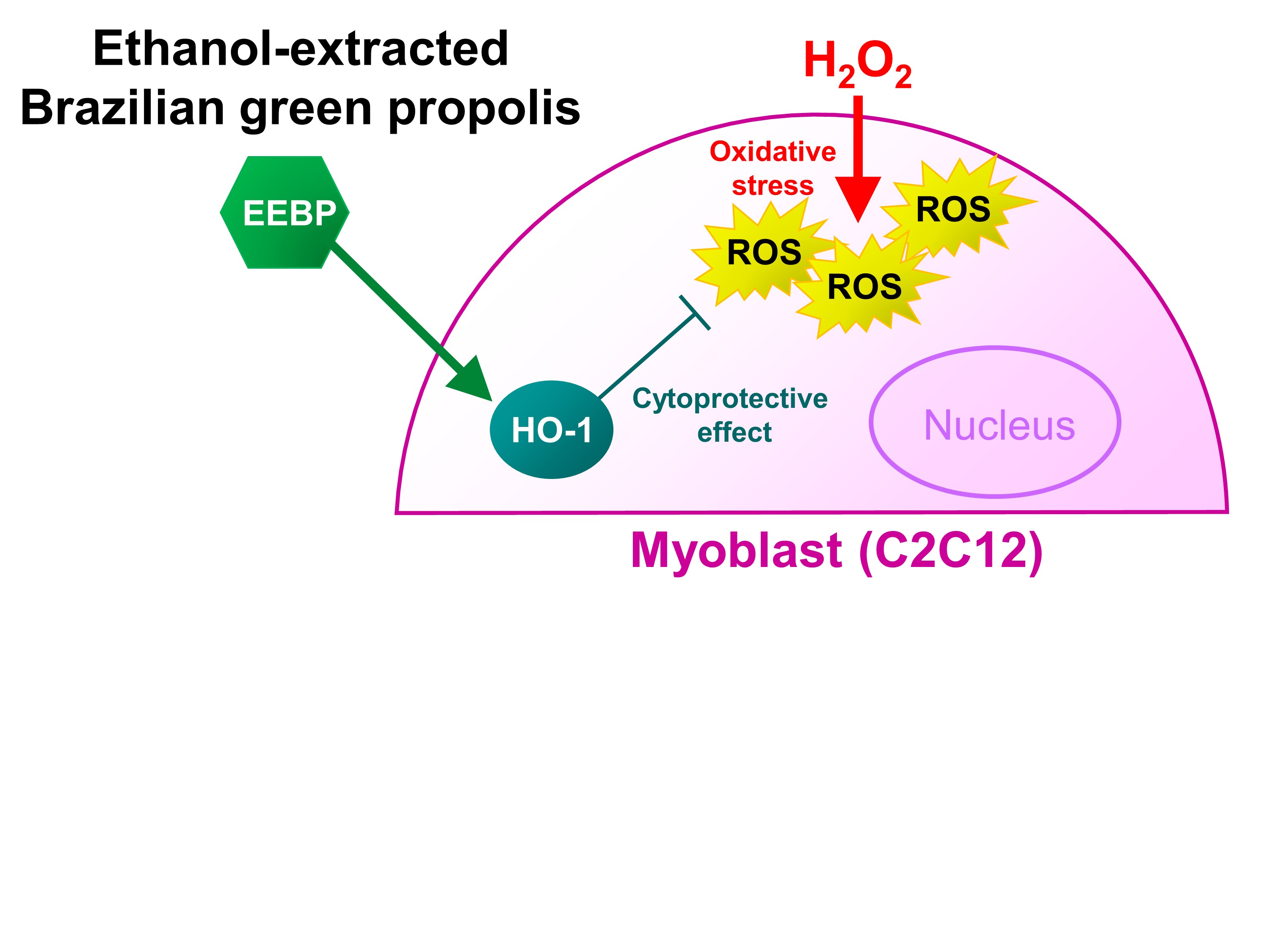Brazilian green propolis promotes the cytoprotective expression of heme oxygenase-1 against oxidative stress injury in murine myoblast cells
DOI:
https://doi.org/10.31989/ffhd.v10i12.756Abstract
Background: Sarcopenia is a progressive skeletal muscle disorder characterized by the progressive loss of muscle mass and function, resulting in physical disability and mortality. Although sarcopenia impacts a large proportion of elderly individuals, no effective treatment for this disease has yet been identified. The excessive production of reactive oxygen species (ROS) can damage tissues and promote aging, and the daily use of dietary antioxidants can be effective for maintaining skeletal muscle health. Propolis, a natural substance that is collected by honey bees, has been used as traditional medicine, and many reports have described its antioxidative properties. However, how propolis exhibits cytoprotective effects and antioxidative effects in skeletal muscles remains unclear. The purpose of this study was to investigate the antioxidative effects of ethanol-extracted Brazilian green propolis (EEBP, from Baccharis dracunculifolia) and its three constituents using an in vitro myoblast cell model.
Methods: Murine myoblast C2C12 cells were treated with either EEBP or its constituents, including caffeic acid, trans-ferulic acid, and p-coumaric acid, in the presence of 100 or 300 mM H2O2 to induce oxidative stress injury. The cell death ratio and cell viability were assessed by Hoechst 33342 and propidium iodide staining and the WST-8 assay, respectively. Simultaneously, intracellular ROS production was measured by CM-H2DCFDA [5-(and-6)-chloromethyl-2’,7’-dichlorodihydrofluorescein diacetate, acetyl ester] assay. Finally, immunoblotting was performed in myoblast cell lysates to assess the expression level of an antioxidative enzyme, heme oxygenase-1 (HO-1).
Results: We demonstrated that EEBP significantly reduced H2O2-induced cell death at a concentration of 3 µg/ml in myoblasts. Additionally, caffeic acid at 100 µM improved cell viability under oxidative stress conditions, but not trans-ferulic acid or p-coumaric acid. Both EEBP and caffeic acid inhibited the H2O2-induced increase in ROS production. Finally, HO-1 expression was increased by treatment with either EEBP or caffeic acid. The increase in HO-1 expression induced by H2O2 was enhanced in the presence of EEBP and caffeic acid.
Conclusions: These findings indicated that EEBP has protective effects against oxidative damage in C2C12 murine myoblast cell line. Caffeic acid is an EEBP constituent that contributes to cytoprotective activity. EEBP may act as an inducer of HO-1 to prevent oxidative stress-induced myoblast death.
Keywords: C2C12 murine myoblast cells, heme oxygenase-1, oxidative stress, propolis, reactive oxygen species

Downloads
Published
Issue
Section
License
Any manuscripts or substantial parts of it, submitted to the journal must not be under consideration by or previously published in any other journal or citable form. Authors are required to ensure that no material submitted as part of a manuscript infringes existing copyrights or the rights of a third party. In submitting one's article in any form, the author has assigned the FFC publishing rights and has agreed to an automatic transfer of the copyright to the publisher. This is so that the FFC may create print option journals, for example, at the FFC’s discretion. If the author wishes to distribute their works by means outside of the FFC, for example within their community, they will have to place a request.
Correspondence concerning articles published in Functional Foods in Health and Disease is encouraged. While derivative works (adaptations, extensions on the current work, etc.) are allowed, distribution of the modified material is not allowed without permission from the FFC.